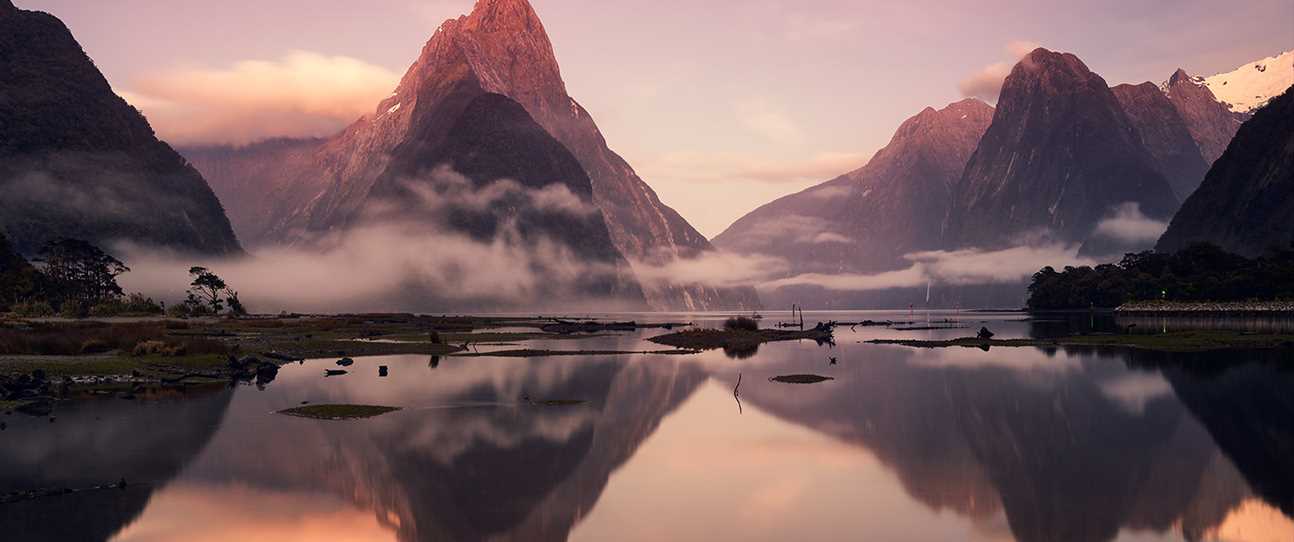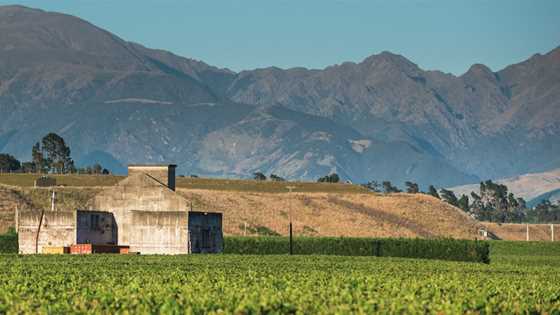See the best of New Zealand’s nature and culture with these top 10 award winners.
If you’re looking for the most popular travel destination in New Zealand, TripAdvisor has recently released its 2024 Top Attraction Traveller’s Choice Awards. With eight out of the ten winners being natural attractions, you can expect to be taken aback by the country’s beautiful naturescapes. We’ve done some research to find out what exactly makes the top 10 so popular.
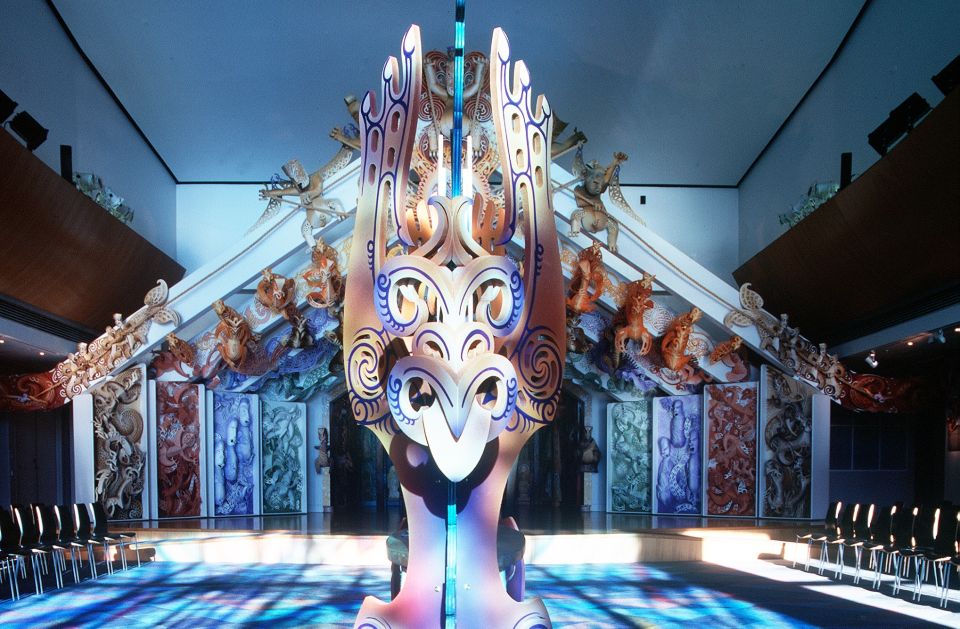

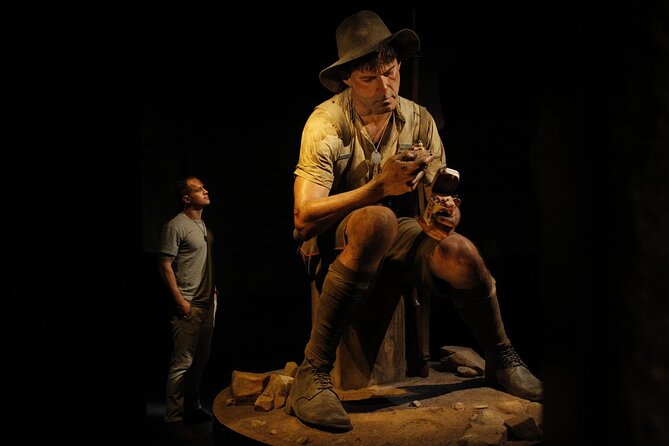
Museum of New Zealand Te Papa Tongarewa
Te Aro, Wellington
Crowned the best attraction in New Zealand, it’s no surprise that the Museum of New Zealand’s Māori name, Te Papa Tongarewa, translates to “our container of treasured things and people that spring from mother earth here in New Zealand”. The Museum of New Zealand consists of five major collections: Māori taonga (cultural treasures), Pacific cultures, art, modern history and natural history.
Currently, the most memorable exhibit for many visitors is the Gallipoli exhibit, where eight hand-crafted “giants” can be seen across the museum floor. They represent eight individuals impacted by the war. These sculptures took 24,000 hours to make and countless more were spent researching their life paths. Alongside these, state-of-the-art technology was used to create projections and interactive experiences to bring the harrowing stories to life. After 10 years in the museum, the renowned Gallipoli exhibit closes in April 2025, so make sure to visit before it goes.
Diverse in their collection, Te Papa houses a range of artefacts. For the history buffs, the museum houses hundreds of ancient artefacts from the depths of New Zealand, that you won’t see anywhere else; such as a mummified moa head and a collection of dinosaur teeth and bones. Also rich in their knowledge of New Zealand’s cultural history, there are plenty of items and stories from the Maori tribes that visitors can learn about. For the 90’s kids, get ready for a wave of nostalgia as the real prop materials and clothing from the famed TV series, Xena: Warrior Princess is also housed in the museum. Located by the Lambton Harbour in Wellington, Te Papa is open every day, from 10am to 6:00 pm. While entry is free, you can book guided tours in advance online. Because of the popularity of the Gallipoli exhibit, you can also get the Gallipoli Early Bird entry, which opens half an hour before the public.
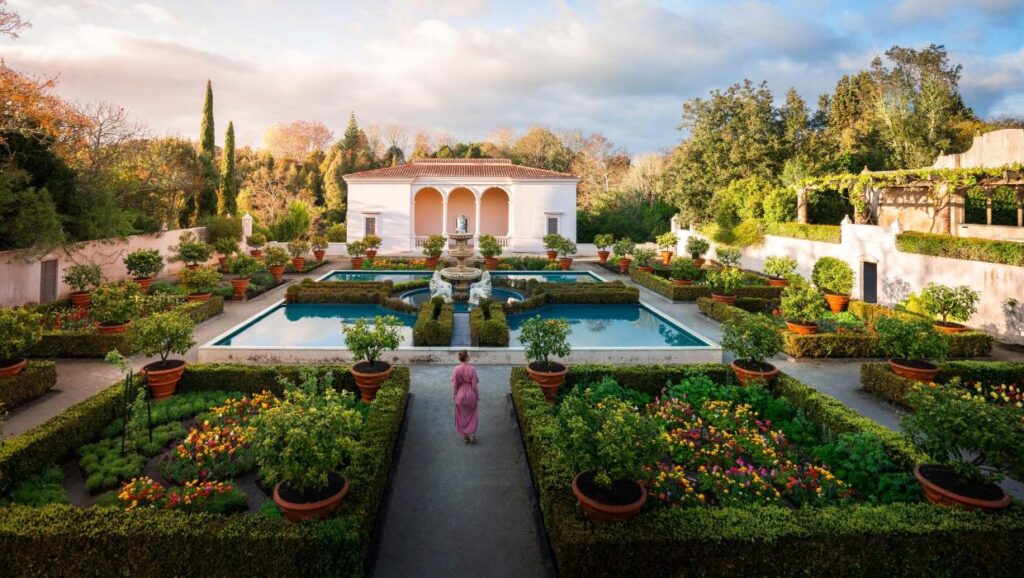
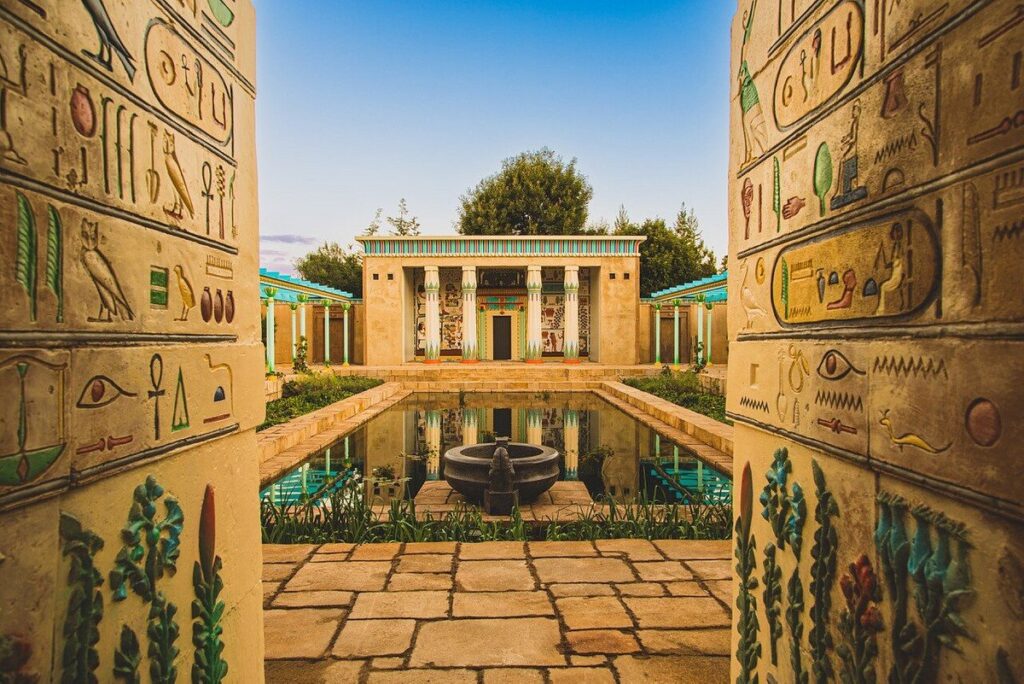
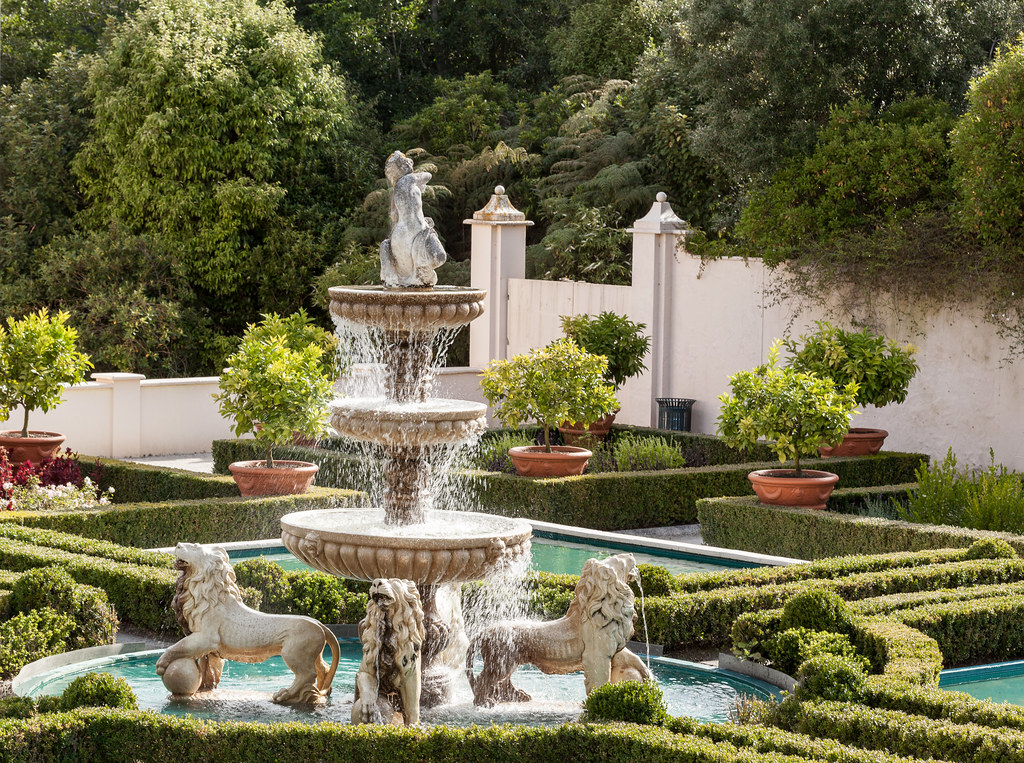
Hamilton Gardens
Hamilton
This unique conceptual garden in the Waikato region explores the history and meaning of gardens through time and across the globe. Located just a five-minute drive from Wellington’s CBD, Hamilton Gardens, an internationally recognised attraction, draws over a million visitors each year—the most popular destination in the Waikato region.
In their expansive location, there are 18 gardens, each with a unique concept on time and history. From the Ancient Egyptian garden, the Italian Renaissance, to the Surrealist and Modernist concept gardens, they tell stories that span over 4,000 years. Every garden tells a distinct story through its unique combination of plants and art; from temples and hieroglyphics in the Ancient Egyptian garden, to moving trees and strange shapes in the surrealist garden. If you’re worried about the weather, the team at Hamilton Gardens has compiled countless recommendations on which gardens are best to see at specific times of the year.
After viewing the beautiful array of greenery, take the family on a picnic on the Hillside Lawn or let the kids explore the playground’s tree house and slides. Or hire a bike to cycle the banks of the mighty Waikato Te Awa (Waikato River). Don’t miss out on the Huddleston Airship either. It is an oversized steampunk blimp, with working mechanical steam engines designed to soar over the plants, pruning hard-to-reach hedges.
While entry is free, in order to not miss anything, it’s advised to use the online interactive map available on their website. There are also multiple tour options. Or if you prefer a free roam, there are also audio-guides in different languages available, so you can take your own time wandering.
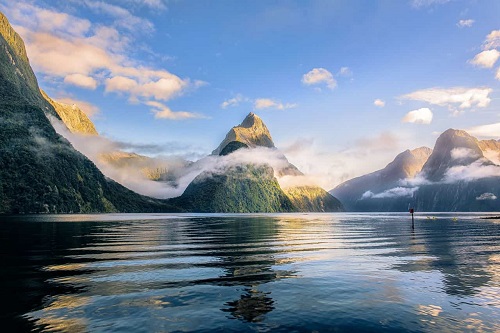
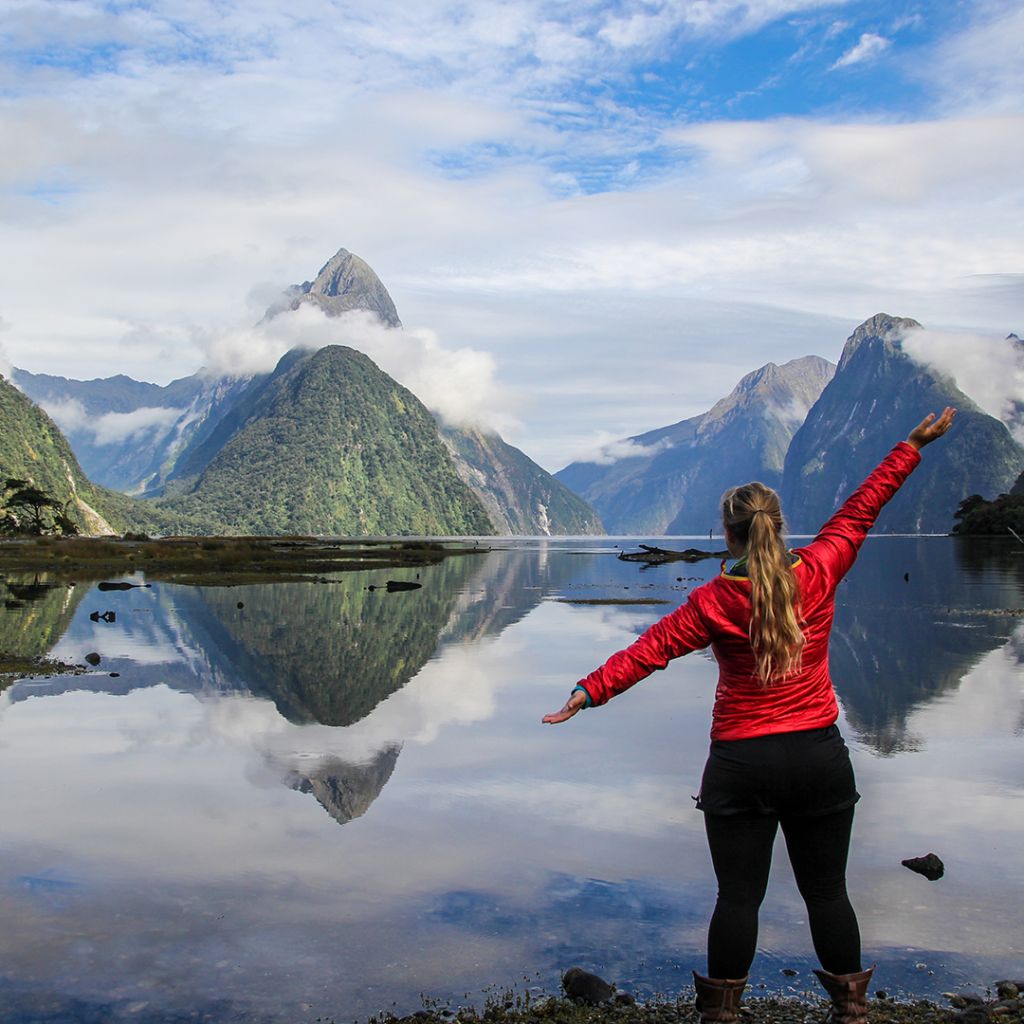
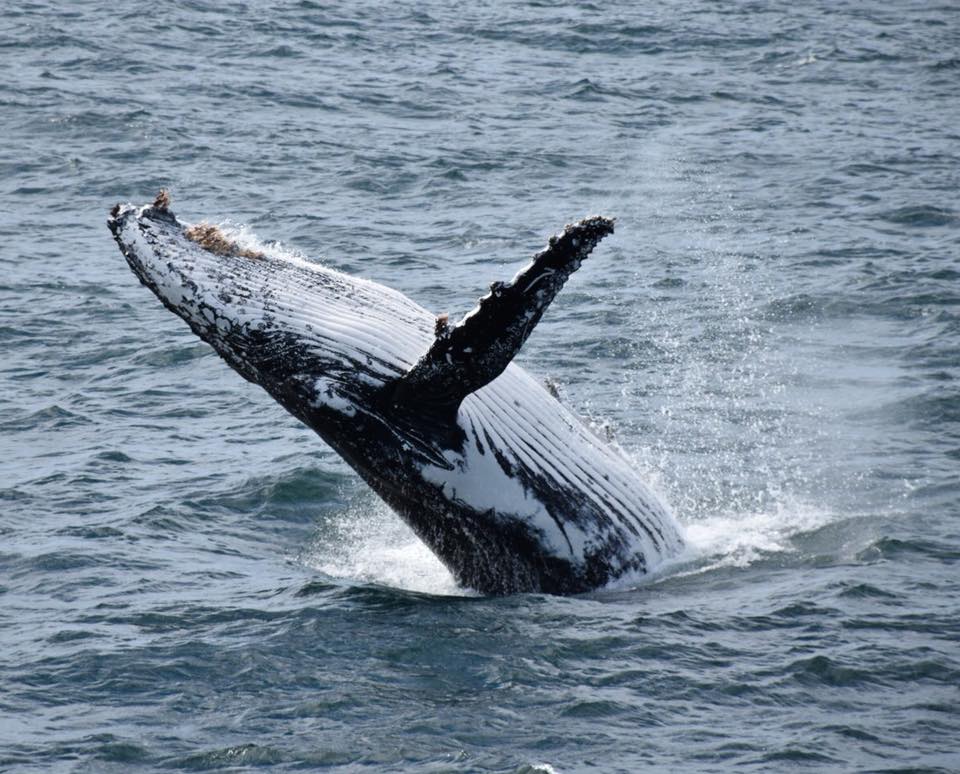
Milford Sound / Piopiotahi
Fiordland
Milford Sound is like stepping into a dreamscape: towering mountains, sheer cliffs, cascading waterfalls, lush forests, and serene meadows. Carved by ancient glaciers, Piopiotahi was likely discovered by Māori over 1,000 years ago—and it feels like an entirely different world. The water here is something special: the top ten metres of water are actually fresh, tinted by tannins, creating a mirror-like surface that’s pure magic. This reflective wonder isn’t just pretty; it’s a thriving hub for unique ecosystems.
Milford Sound is a vibrant playground for bottlenose dolphins, whales, seals, and the native Fiordland penguin. And let’s not forget—it’s one of the wettest places on Earth. Don’t sweat the rain; it only enhances the experience. On the wettest days, waterfalls can stretch to a staggering height of a thousand metres.
Don’t miss the Milford Discovery Centre and Underwater Observatory. Accessible only by boat, you can descend 64 steps below sea level to marvel at the underwater world of anemones, fish, and the rare black coral.
Getting to Milford Sound is an adventure in itself—opt for a scenic flight from Queenstown or a picturesque four-hour drive. Once you arrive, the fun begins: cruise the waters, take a helicopter ride, or embark on a hike, no matter your fitness level. For a touch of luxury, overnight cruises and resorts let you linger in this magical place. And for the adventurous, there’s kayaking and fishing to explore, too.
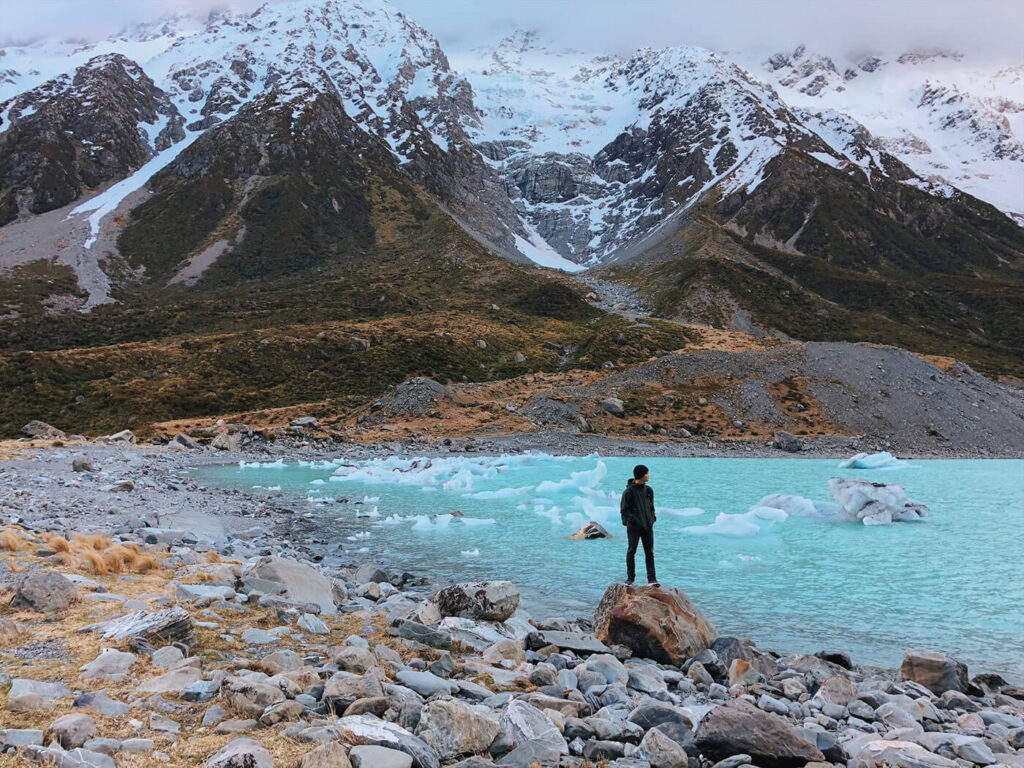
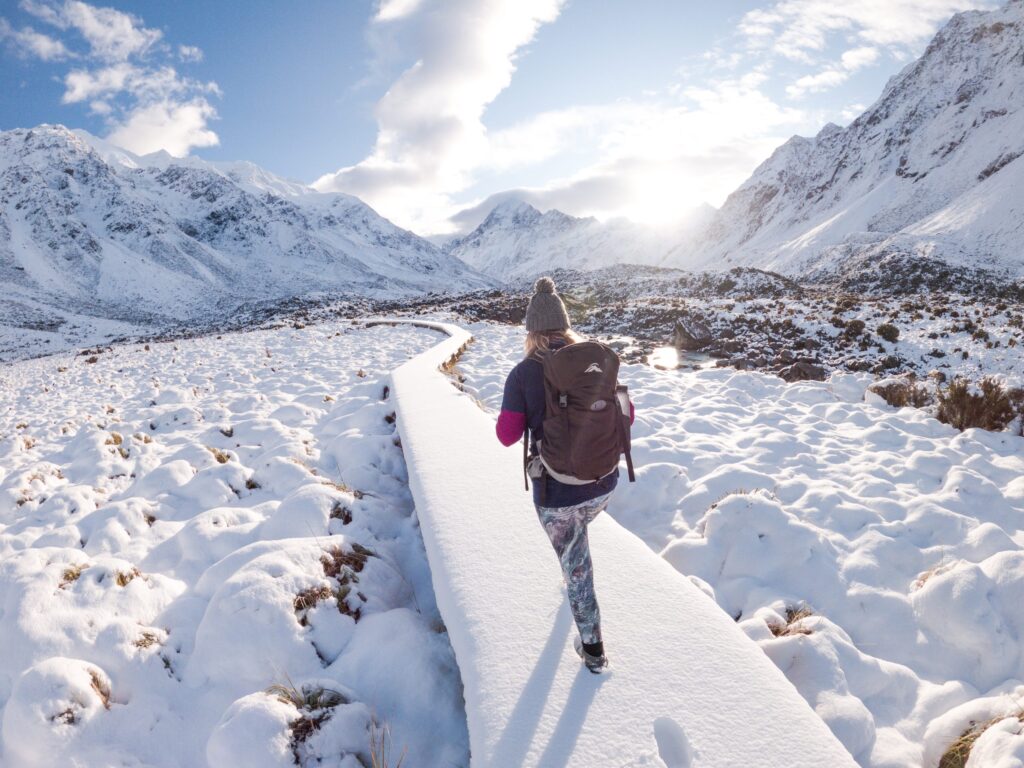
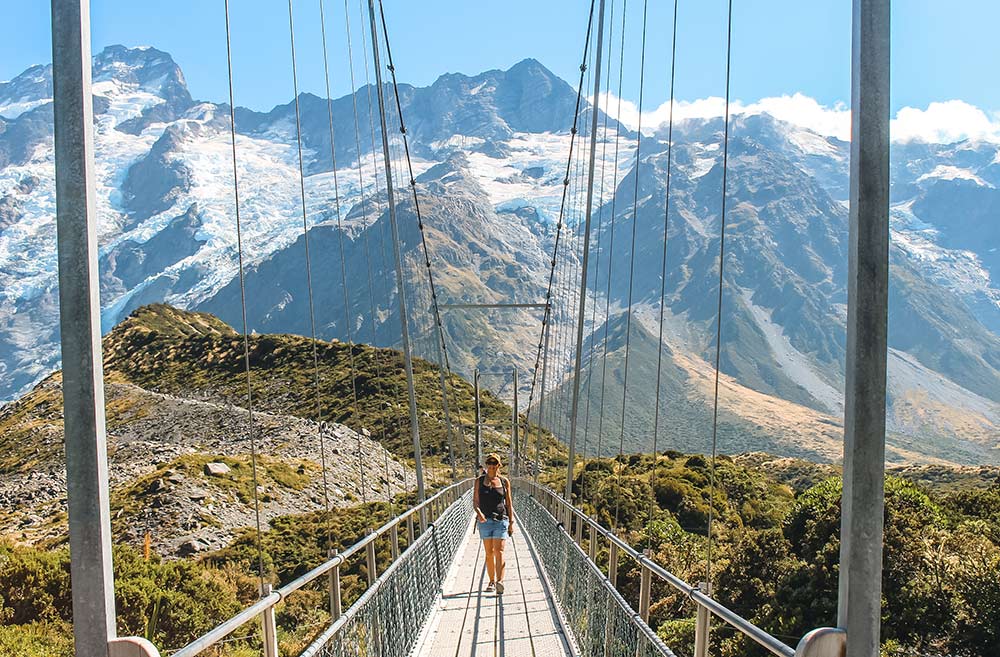
Hooker Valley Track
Coraki / Mount Cook National Park
There’s no better way to immerse yourself in New Zealand’s ancient landscapes than by walking through them. The Hooker Valley Track, a UNESCO World Heritage Site, offers a journey past vast lakes, rugged cliffs, and majestic glaciers. Spanning ten kilometres, this track typically takes around three hours for a return trip, though setting aside four hours allows ample time to soak in the breathtaking scenery. The track is mostly flat with paved roads, but many sets of stairs, so while it may be slightly challenging, it’s suitable for varying degrees of fitness. Picnic tables along the way make it ideal for families with older children.
The track leads you to the foot of the tallest mountain in New Zealand. Mount Cook, or, Aoraki in Māori, meaning “Cloud Piercer”, a name that seems fitting as you look up to the great peak. There is no better place to see the mountain, as the track’s views of the mountain are completely unobstructed, with Hooker Glacier seen in the valley below.
Highlights along the track include swinging bridges, rapid rivers, and even icebergs floating in the glacial lakes. The lakes’ distinctive colour comes from the particles released by the glaciers, adding to the surreal beauty of the landscape.
The trail is a two to three-hour drive from Wanaka, or eight minutes from Mount Cook Village. The track is easily accessible by car, but try to arrive before 9:30, to beat the crowds and find parking. Given the alpine climate, weather conditions can change rapidly, so it’s wise to come prepared.
While the Hooker Valley track is the most popular in the region, there are other tracks available, especially if you’re looking for more of a challenge. For those seeking adventure, options such as charter flights, glacier climbing, crater walks, and mountaineering are readily available to experience too.
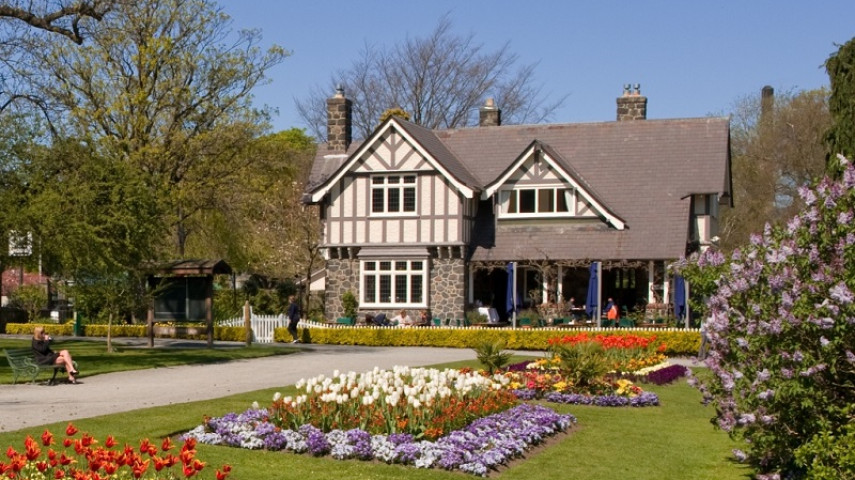
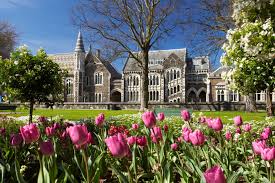
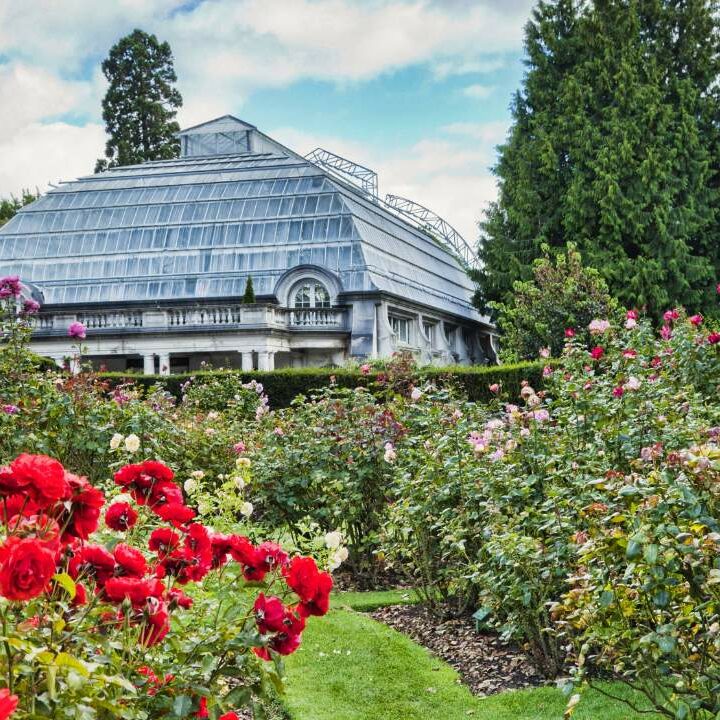
Christchurch Botanic Gardens
Christchurch
Escape the hustle and bustle of Christchurch’s city life and immerse yourself in the tranquil beauty of the Botanic Gardens. This gem, which draws over 1.1 million visitors annually, is a must-see haven. Spanning 21 hectares and boasting over 150 years of history, the gardens feature ten distinct areas, each showcasing a diverse range of plant species from New Zealand and beyond.
Each of the ten gardens is dedicated to different types of plants, specialising in both those native to New Zealand and the wider world. One standout, the New Zealand Icon Garden, is a trail loop dedicated to the nation’s most beloved native species. You’ll also find areas dedicated to trees, open spaces and specialised conservatories: one for succulents and another for ferns.
The pathways are easy to walk through, with most of the area being flat, making it suitable for young children and families. There is an interactive walking map and a comprehensive walking guide available on their website, to make sure you’re not missing out on anything.
The Botanic Gardens showcase seven seasons to reflect the different stages of flowering throughout the year. Seasonal maps and a digital guide keep you informed on what’s in bloom, so you can visit year-round without missing anything. As one of Christchurch’s main attractions, no season’s particularly busy. From summer roses, to winter orchids, there is always something to see.
Don’t miss the Magnetic Observatory, the last remaining structure of its kind once used by Antarctic explorers. There are various family and kid-oriented events and activities throughout the year. The Kidsfest Gnome Quest is an exciting hunt, with hidden treasures throughout the garden, running every July. You can even try to find the hidden Gold Gnome to get the chance to win $100. Every Saturday, the EnviroKids is an educational opportunity with activities inspired by different organisations that work with the environment. There are countless more activities, such as craft or plant-based fun that run all year, perfect for families.
The Bandsmen’s Memorial Rotunda was built in 1926 to commemorate those who died during the First World War. Surrounded by Turkish oak trees and overlooking the Woodland garden, the rotunda is worth a visit as a viewpoint and for the crafted structure itself. The rotunda is a popular venue for musical concerts, from quartets to pipe bands. Its tranquil, romantic beauty also often attracts weddings.
If you get tired from exploring, there are plenty of spots to picnic, or visit the garden café. There is also a gift shop and an interactive exhibition displaying the history of gardening in the area.
Open daily from 7 am with free admission, the Botanic Gardens is conveniently located just a 10-minute walk from Cashel Street Mall.
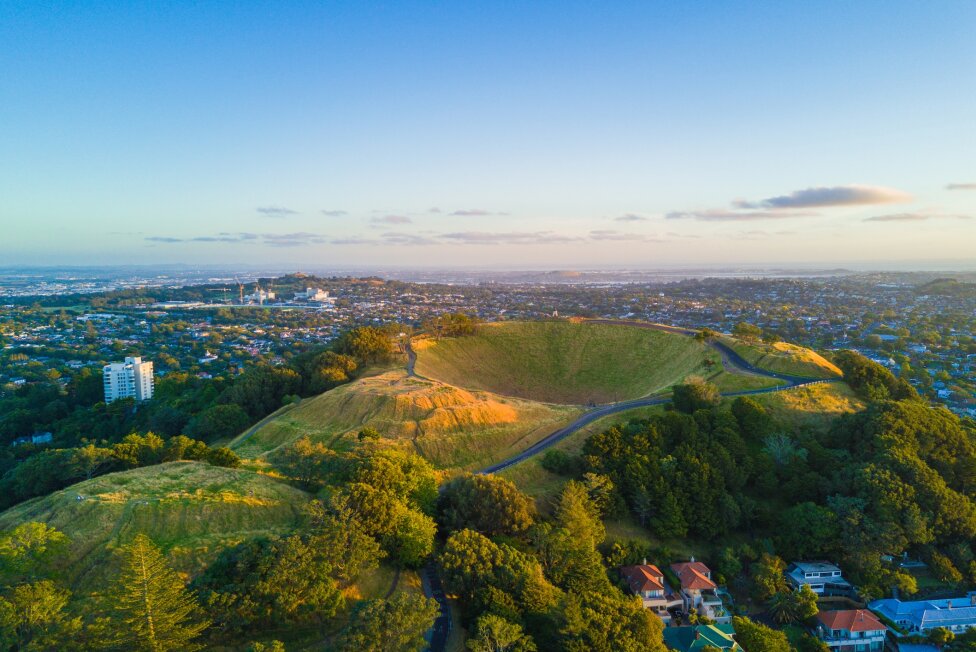
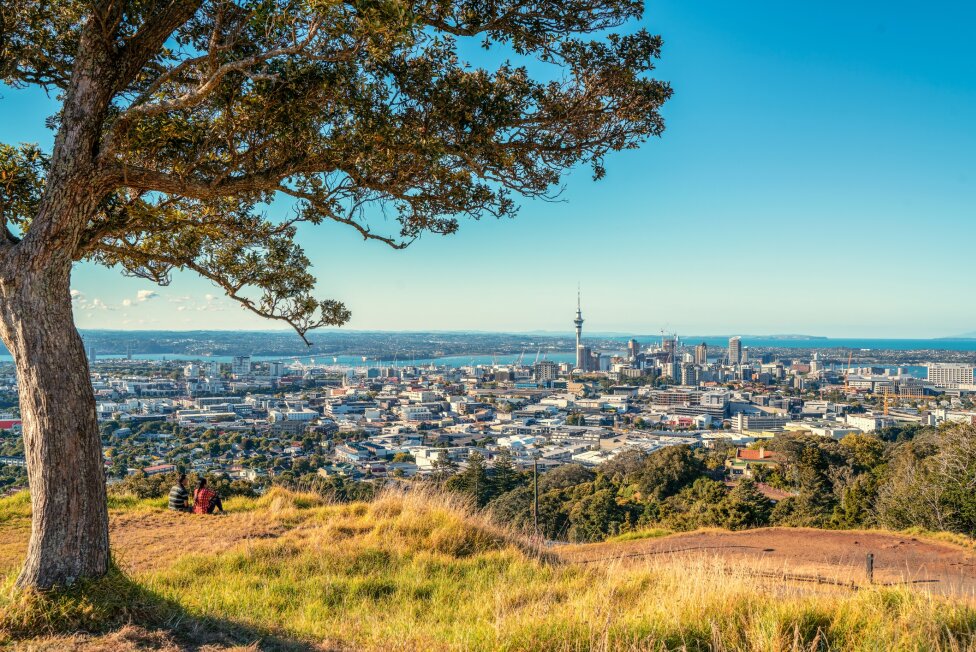
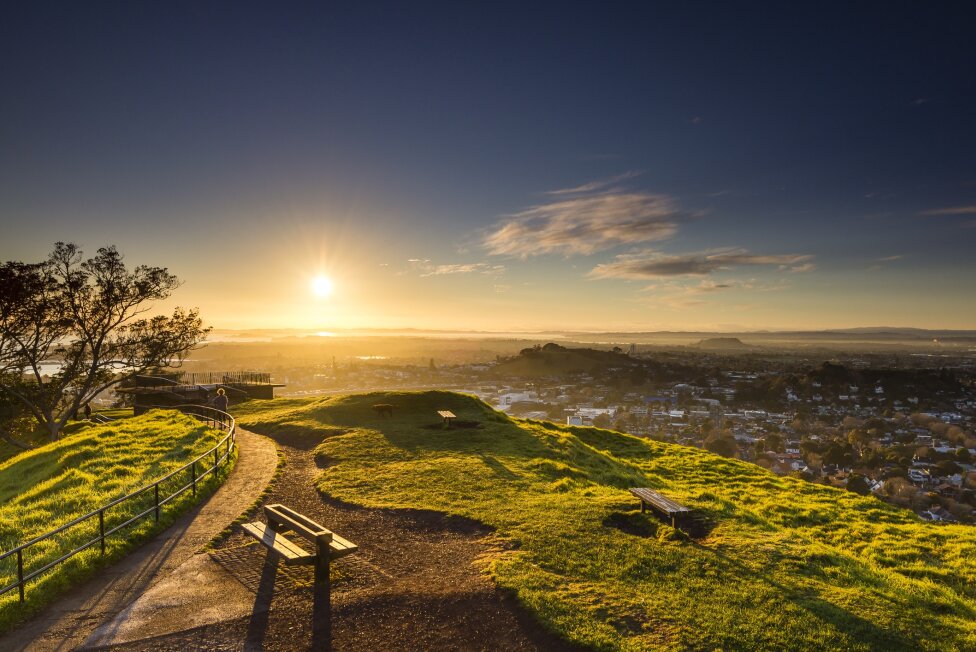
Mount Eden / Maungawhau
Auckland
Mount Eden is the highest volcanic peak in mainland Auckland, with incredible views of the city and the harbour. It is Auckland’s highest volcanic cone, standing at 196m. Initially abandoned in 1700 AD, the mountain was used as a “fortified hill pā”, a defensive settlement, used by various Māori tribes to protect against attacking forces. Now, it attracts visitors who want a relatively easy climb to the top. It is a dormant volcano, surrounded by greenery, with full-circle views of Auckland.
One of the city’s most popular walking routes, starting at the port you can reach the peak in about an hour. Alternatively, take the bus 27 from Britomart to Tahaki Reserve to start your hiking journey. There are various pathways to get to the top of the mountain, each takes roughly 15 minutes, depending on fitness level. Due to concerns over erosion, vehicles can no longer drive to the summit, with the exception of travellers with limited mobility. The view truly captures the range of a city that has everything, from city high-rises and the iconic Majestic Centre, Wellington’s largest building. In the distance, over the clouds, spot beaches and volcanos.
For those craving further adventure, guided tours of Auckland’s other volcanic sites are available, as well as insightful Māori cultural tours like the ‘Tamaki Hikoi Māori Walking Tour Auckland,’ which brings the mountain’s rich history to life. Tickets for these tours start at $55 NZD for adults.
The crater at the centre of the mountain, is known as Te Ipu a Mataaho, or, the ‘Food Bowl of Mataaho’, the God of things hidden in the ground. It is a stunning 50 metres deep, however is a sacred place for the Maori community, so don’t enter, but feel free to explore the pathways at the peak.
Once you’ve taken in the tranquillity, walk back down to the city and finish the day at some award-winning bars and restaurants. The area is known for its charming eateries, such as The Garden Shed, offering authentic New Zealand cuisine, in a casual atmosphere. There is also Circus Circus, which offers a menu blended in New Zealand and international cuisine.
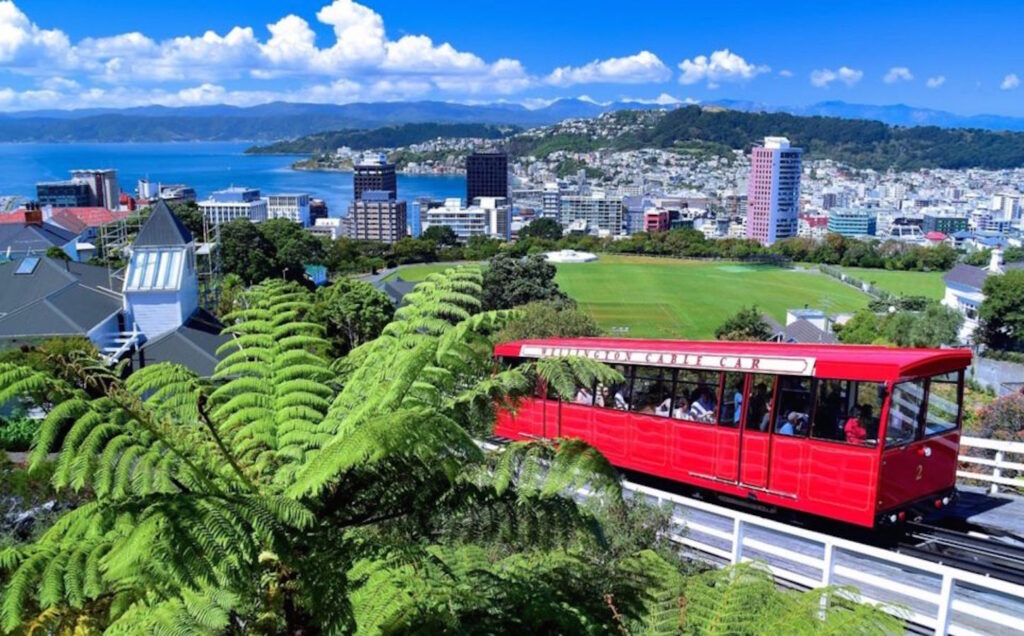
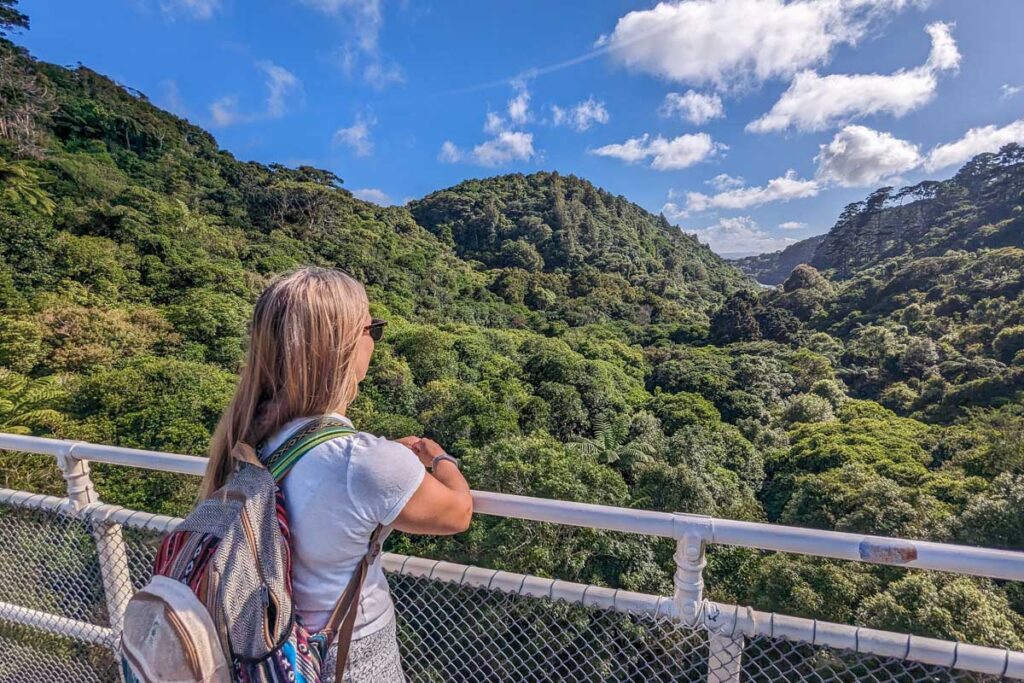
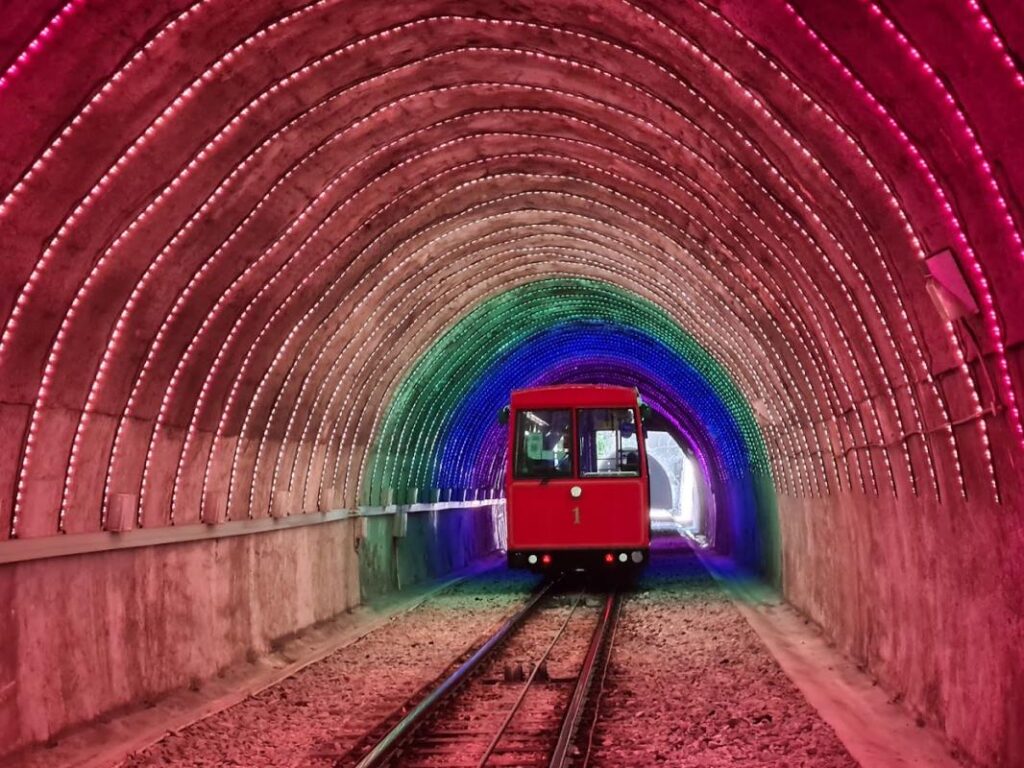
Wellington Cable Car
Wellington
The Wellington Cable Car is not only a perfect way to see the city, but a great form of transport to various tourist destinations. Operating for over 120 years, it has become one of Wellington’s most cherished attractions.
Departing from Lambton Quay, central to Wellington’s CBD. It’s a five-minute ride from the city centre, through the houses of Kelburn, passing through Clifton Station, Talavera Station and Salamanca Station.
These stations are mostly for cable car commuters, but Salamanca Station sits alongside Kelburn Park, with a fun children’s playground and a tranquil fountain built in the 1940s.
At the top, there is a free museum, exploring cable car history, a gift shop and a café. From the top, there is a perfect start to walk through the botanical gardens. You can also catch a free shuttle bus to Zealandia, an eco-sanctuary, where you can walk around native bush and discover rare, endangered birds in their native environment.
While the journey has an incredible view, there is also entertainment for children, as each of the tunnels features a colourful light show. The intricate lighting gives the illusion of “travelling at light speed in a time machine”. The lights are also regularly changed to align with special events, perfect entertainment for kids.
While opening times vary, the cable car is open every day, except Christmas Day. The cars run every ten minutes, meaning you can typically avoid a long line. However, check for when cruise ships are in the port, as this is when it may get busy. There are also walking tracks to walk back down to the heart of the city.
Tickets are $6 NZD one way, or, $11 NZD return. And, it’s dog-friendly!
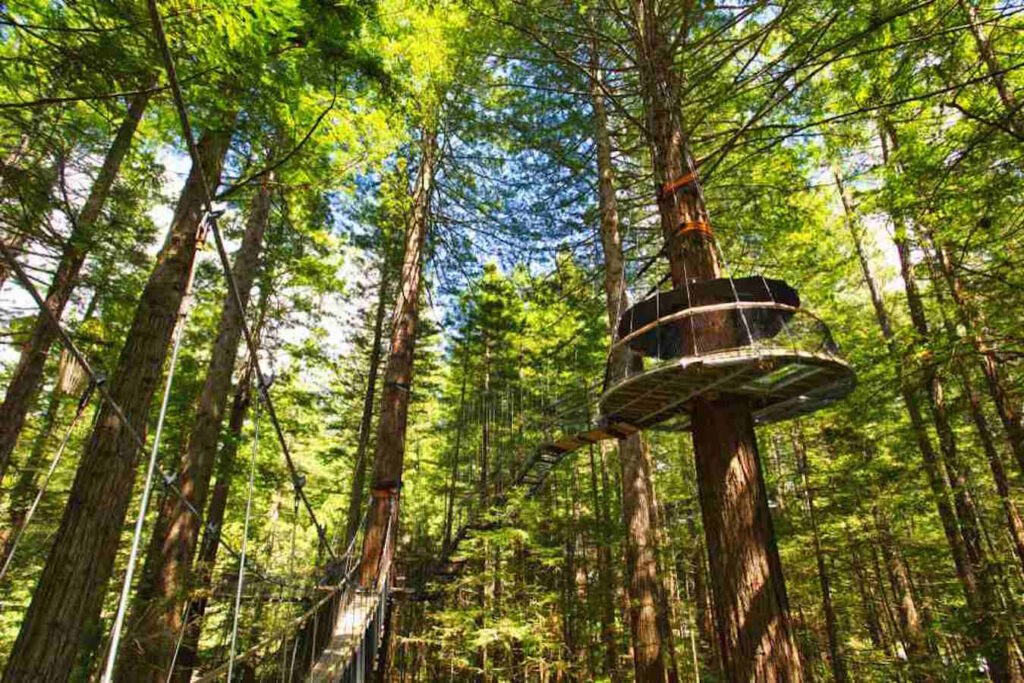
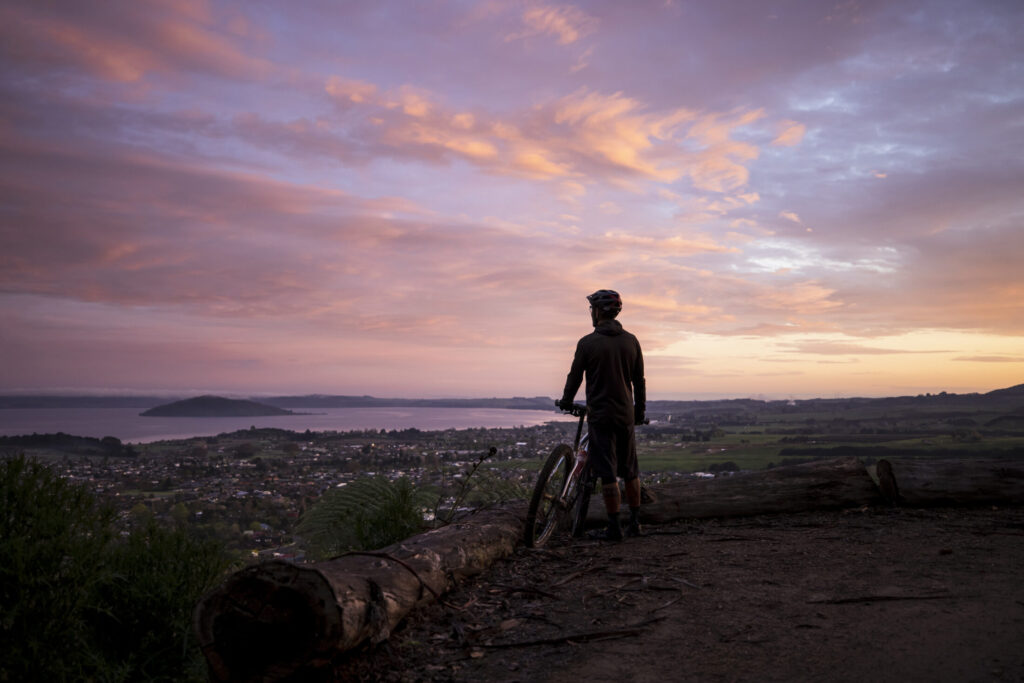
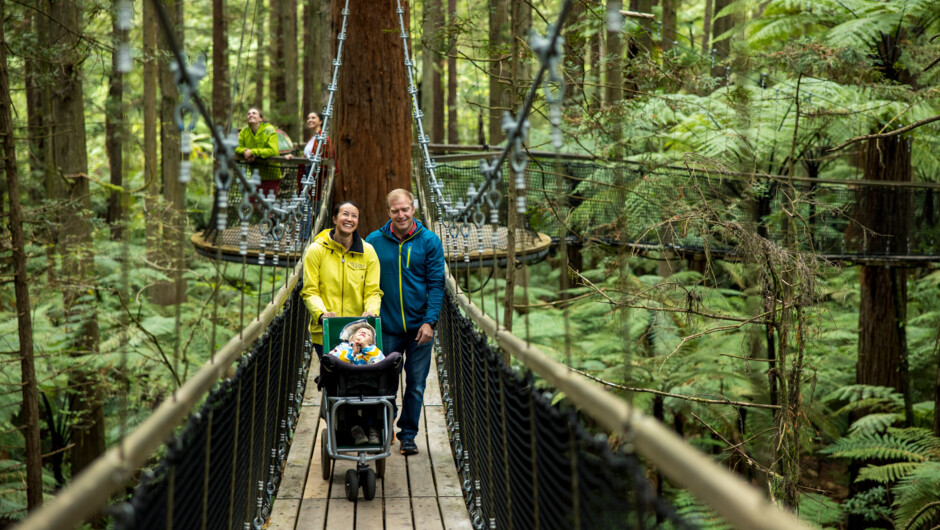
Redwoods, Whakarewarewa Forest
Rotorua
Explore the wonders of the Redwood trees, at Whakarewarewa Forest. The Californian Redwood tree is not native to New Zealand, however, the trees in the Whakarewarewa forest have grown stronger and faster than in their native American area, due to the rich soil and high rainfall. The original planting of 12 hectares, has grown to over 5600 hectares, in just 100 years.
Entry to the forest is free, and visitors can enjoy a variety of open trails for walking, biking, and horse riding—all at no cost. Detailed maps are available, offering explanations of each route to help you choose between family-friendly paths and more adventurous options. The trail most recommended for families is a gentle loop that takes about an hour to complete and is accessible for strollers. Don’t forget to bring a packed lunch; the scenic surroundings are perfect for a picturesque picnic.
The tallest tree in the forest stands at 75 metres tall and for those daring enough, there are extra options available to heighten your experience off the forest floor. The Tree Walk is $39 NZD, which is a tour of the trees from elevated platforms. The Tree Walk can be taken at day or night, but the night show is extra special, with lanterns and light displays amongst the redwoods. There are 23 “Indiana Jones style” jungle swinging bridges, adding an edge of fun for kids. The Redwoods Altitude tour, priced at $110 NZD is for those who crave even more adventure, raising you even higher, with a soaring 25 metres above the forest floor. The Altitude tour has activities including but not limited to, walking along suspended walkways, bridges, zip lines and belays. For this, you will have to book in advance, online.
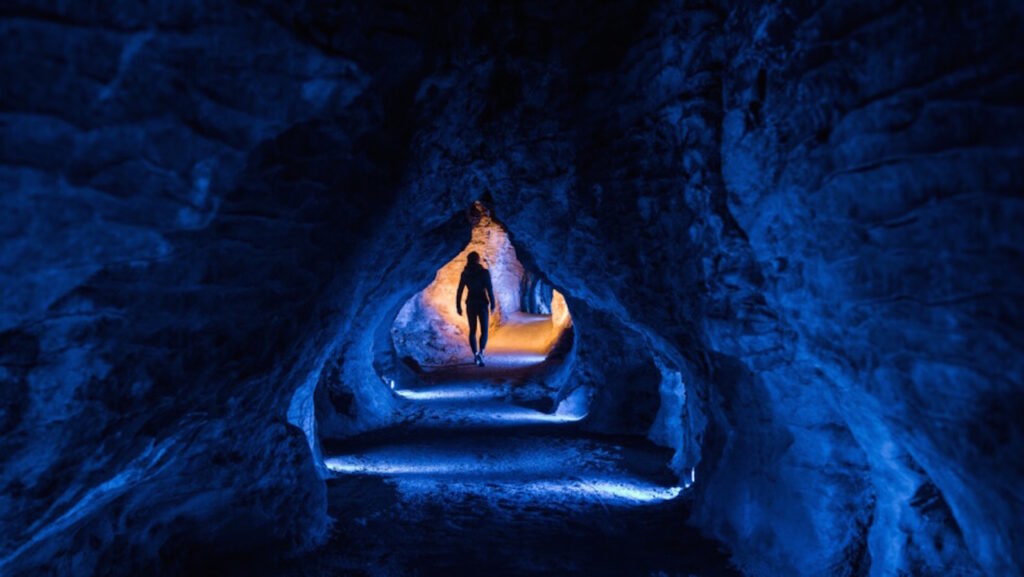
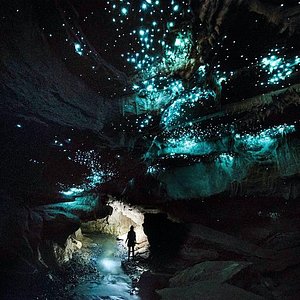
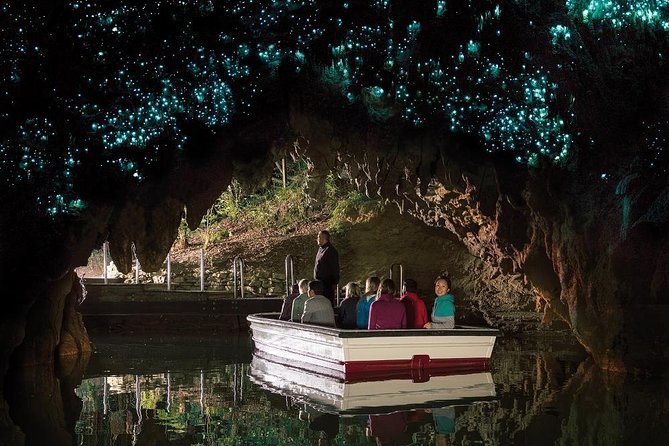
Ruakuri Cave
Waitomo
Once you’ve been to all the highest points across the country, explore New Zealand’s longest guided underground walking tour. Once you have climbed down the 15-metre spiral staircase, you can marvel at the crystal and limestone formations, thousands of years old. Upon deeper exploration, the dark caves will turn into a starry night sky, from the hundreds of glow worms that inhabit the cave.
The Ruakuri Cave was first discovered up to 500 years ago by local Māori and one of the entrances, close to the current entrance, was used as a spiritual burial site. The galaxy lights from the glow worms, in a place so dark, is exactly why the cave was deemed a sacred site. If you thought that was impressive—there are also underground rivers and hidden waterfalls. Even though it’s small, at about one and a half metres tall, you will hear the waterfall roar as the water echoes around the cave walls. Additionally, there are fossils from a time when the area was completely beneath the sea, depicting just how ancient the cave truly is.
Due to an inventive design, the cave has full wheelchair and pushchair access, making it the only wheelchair-accessible cave in the Southern Hemisphere. There are multiple tour options, each led by cavern experts, which cover 1.6km of the 7.5km cave system. Walking tours are great, but you can squeeze in some extra adrenaline with a kayak or boat tour, closer to all of the sights.
It can get cold that deep underground, so make sure to bring a jacket.
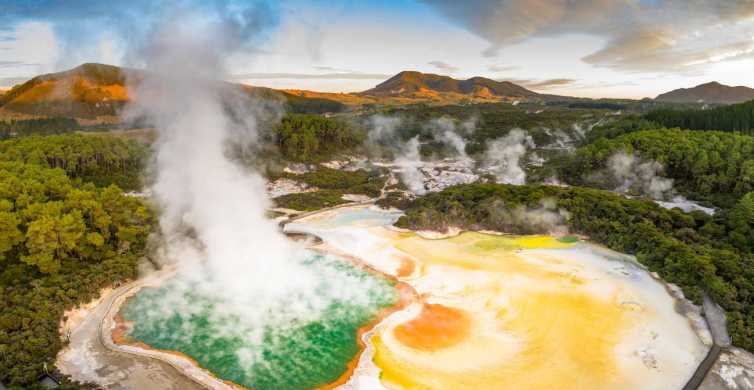
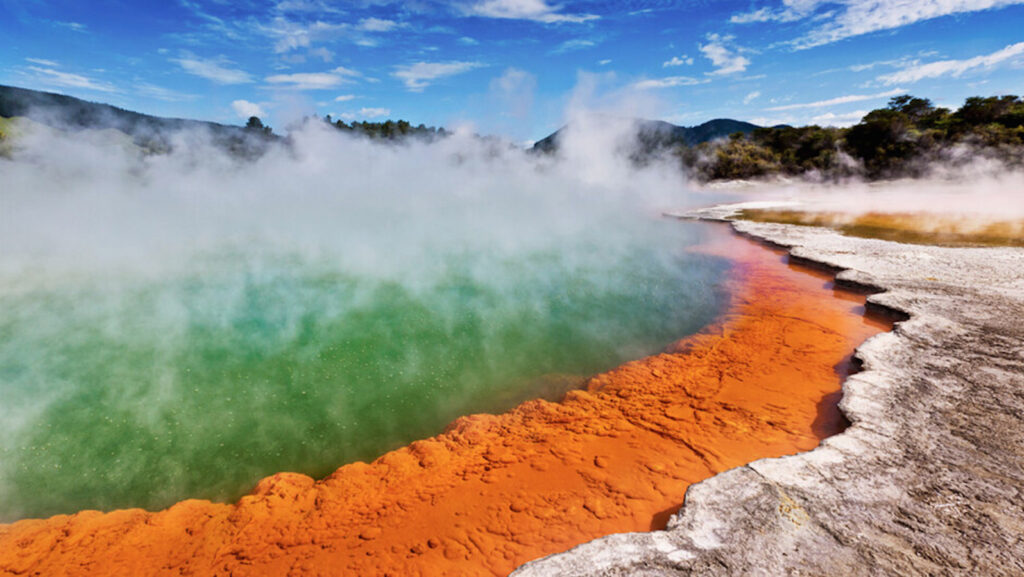
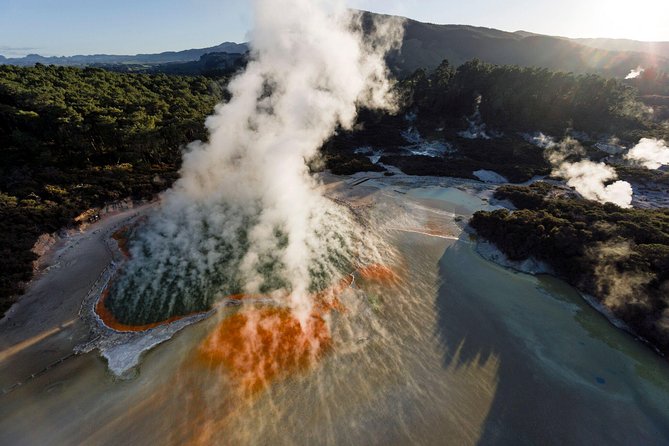
Wai-O-Tapu Thermal Wonderland
Wai-O-Tapu
Thousands of years in the making, the Wai-O-Tapu Thermal Wonderland exemplifies the uniqueness of New Zealand’s geothermal elements. Labelled “One of the 20 Most Surreal Places in the World”, the wonderland lives up to its name.
The geothermal park consists of various areas such as the champagne pool, sinter terrace formations, steaming ground and huge volcanic craters. The mud pool is the largest in New Zealand, originally the site of a large mud volcano that was destroyed in the 1920s due to erosion.
The Lady Knox Geyser is the most popular attraction. The Geyser erupts daily at 10:15 am, but because it’s so popular, try to get in early to make sure you get to see it. Watch the geyser erupt, into an explosion of steam that can reach 20 metres in height. The Lady Knox Geyser is located a 2-minute drive from the main Visitor Centre. Visitors must drive to this location for safety and parking is available in this area which is well signposted.
The thermal park is a one-hour drive from Rotorua’s centre and the drive itself is astounding—with volcanic craters on either side of the road, causing a mystical steam to rise up over the path.
The park is open every day, 8:30 am – 4:30 pm, with the final admission at 3:00 pm. Note that they are completely cashless.

